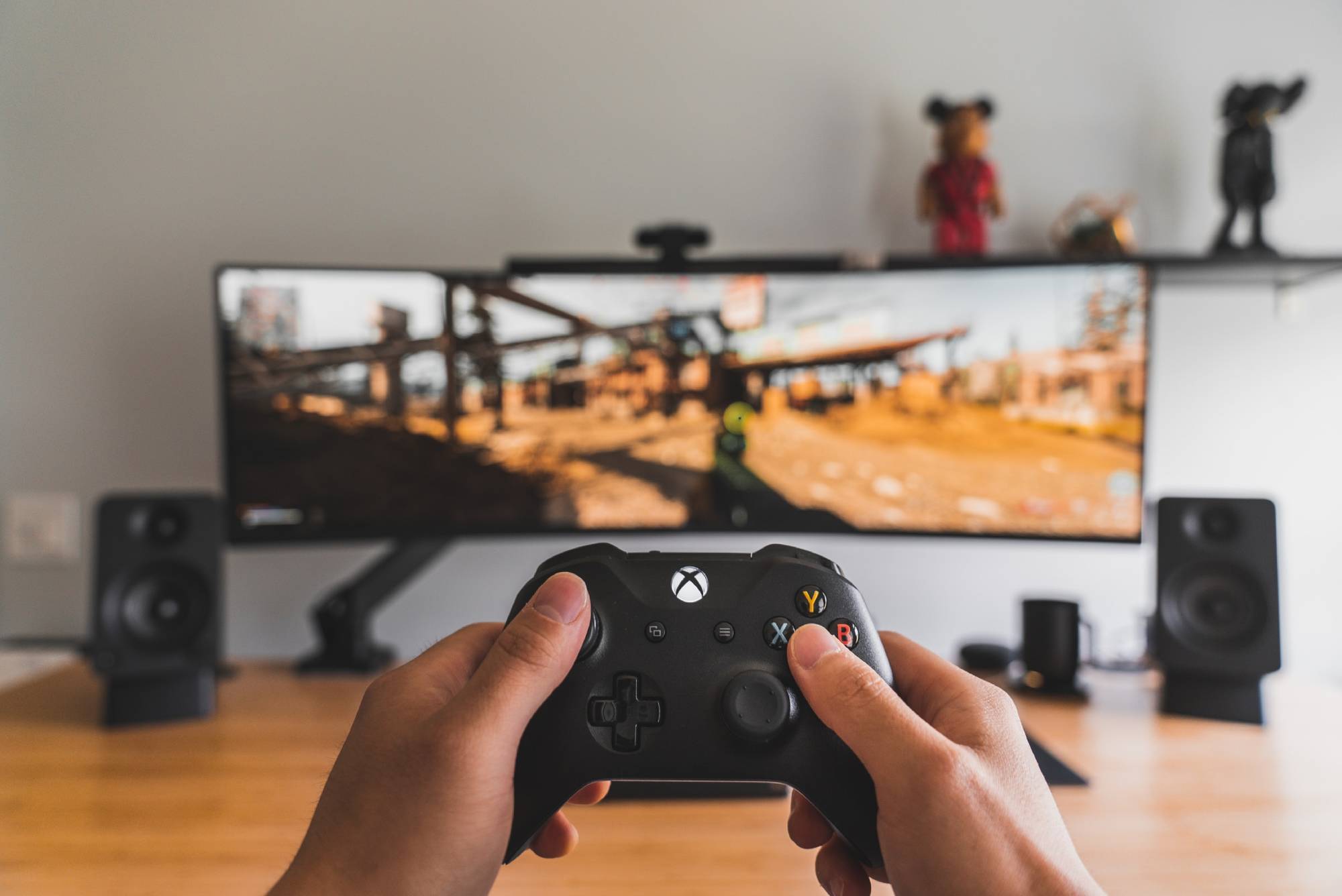

We may earn revenue from the products available on this page and participate in affiliate programs. Learn more ›
Alongside music and movie streaming, we’re now seeing more and more ways to stream games. But this isn’t limited to playing titles stored in the cloud, because you can also stream games from one room to the other.
If you’ve got a gaming PC rig in your bedroom, you can use the power and library of titles in that setup to play on other computers and set-top boxes, like the big TV screen in the living room, for example.
There are several platforms out there to help you do this, but these are our favorites so you can choose the best one for your hardware and software setup.
Steam Link
Steam Link is perfect for anyone gaming on Steam—it’s a free add-on that builds on the platform and transfers that experience to different devices around your home. You can even use Steam Link over the internet from remote locations, though there will be some lag depending on the speed of your connection.
With Steam already managing the gaming library on your main PC, install Steam Link on any Android, iOS, Windows, or macOS device you want to game with. The installation process is similar no matter what platform you’re using, and connection doesn’t involve much more than signing into your Steam account.
[Related: Video gaming is for everybody now. Here’s how to get back into it.]
But before the action starts, the Steam Link app will check for two things—a strong Wi-Fi connection, and that you’ve set up a gaming controller with your secondary device. Most controllers (including the latest PS5 and Xbox Series X/S accessories) work with most computers and mobile devices, and you can easily connect them over Bluetooth. Once that’s done, the app will scan your network for computers running Steam.
Steam Link will provide you with a PIN, and connecting your computer to your secondary device is as simple as entering that number on your main gaming machine. Then, you’ll be up and running, and you’ll be able to browse through games, and launch and control them through Steam Link.
Keep in mind that on the main computer where Steam is actually running, the game will open up and play on screen—you’re simply mirroring that over to your secondary device.
GameStream
GameStream by Nvidia is another great option, but you’ll need a Windows PC with a recent GeForce GTX or GeForce RTX graphics card in it, and an Nvidia Shield TV streaming box.
To set this up, open the Nvidia GeForce Experience software on your PC, head to the Settings panel (via the cog icon, top right), and select Shield. Make sure the GameStream toggle switch is on. On the Shield TV, open the Nvidia Games app and then select My library and GameStream to find the gaming PC on your network and pair with it. For best results, you’ll also need to connect a gaming controller. To do this, choose Settings from the Shield TV home screen, then Remotes & Accessories and Add Accessory.
[Related: Nvidia’s RTX 3050 graphics cards could be a big boon for cheap gaming laptops]
GameStream is designed to work through Steam, and you’ll see the gaming service as an option when the Shield TV and your gaming computer are connected. You can also add games through the Shield panel of Settings in the GeForce Experience software running on your PC, but if it’s not running through Steam, you might run into a few bugs.
To use GameStream with a device other than the Nvidia Shield TV, such as a laptop, you can try Moonlight. This open-source client for the GameStream protocol has app versions for Windows, macOS, Android, iOS, and other platforms. As soon as the app launches, it will run a scan for compatible PCs on your local network and display a PIN code you’ll have to enter on your main computer to finish up the connection.
Other apps
There are other apps that will take the games you’re running on one computer and stream them to another device for you.
Install Remotr on your main Windows gaming computer to stream titles to Android and iOS devices, as well as to other Windows machines (macOS support is coming soon). It’s free to use, though you will need to register an email address to get it up and running.
Install Remotr both on your computer and your other device. Once you open the app on your mobile device, it should detect the gaming machine automatically over your local Wi-Fi network. You can connect a controller to get a more conventional experience but, unlike other services, you won’t actually need one—Remotr will set you up with on-screen touch controls on your mobile device.
[Related: Stressed out? Video games can help—if you follow these tips.]
Then there’s Rainway, which—surprise, surprise—works in the same way as all the other platforms we’ve mentioned. You’ll need to install the software on the PC where your games are, as well as the corresponding companion app for your other computers and mobile devices. In this case, it’ll even work in a web browser. Like Remotr, Rainway is free to use, and you only need to register your email address to get an account.
Open up the Rainway app on the device that you’re connecting from, and you’ll see a code to enter on your main PC. This gives you access to all your games, with various settings available for stream quality and window behavior (whether or not you want to play in full screen mode). As with the other tools, you’re essentially just mirroring the screen of the main computer to your secondary device over Wi-Fi.